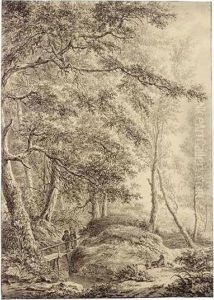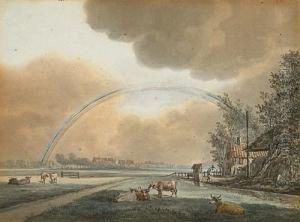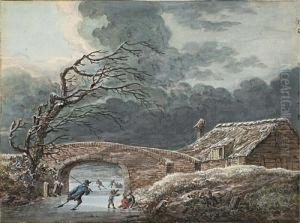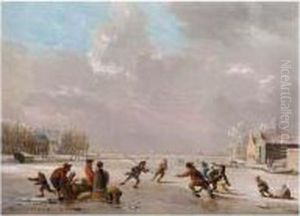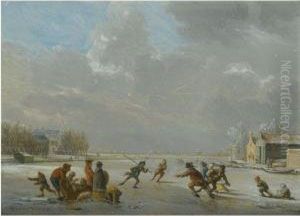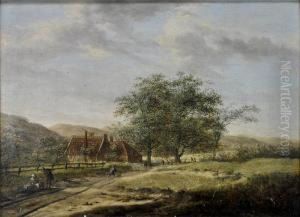Vincent Jansz. Van Der Vinne Paintings
Vincent Jansz. van der Vinne was a Dutch painter and draftsman, born into an artistic family in Haarlem, The Netherlands, in 1736. He was a member of the prominent Van der Vinne family, which included several generations of artists. His great-grandfather, Vincent Laurensz van der Vinne (1628–1702), was a contemporary and acquaintance of the famous Dutch painter Frans Hals.
Vincent Jansz. van der Vinne's artistic career unfolded in the context of the Dutch Golden Age's decline, a period which had seen the Netherlands flourish in the arts, sciences, and trade. Despite this, Van der Vinne continued the family tradition and contributed to the Dutch art scene with his work.
Not much is known about Van der Vinne's personal life or training. It is presumed that he received his artistic education from his family members, as was common practice at the time. His oeuvre included primarily landscapes and still lifes, which were popular genres among Dutch artists of the 18th century. His style was influenced by the Baroque tradition, yet it also showed signs of the changing tastes and the onset of neoclassical influences that were becoming more prevalent towards the end of the 1700s.
Van der Vinne's work, like that of many artists of his time, was characterized by a meticulous attention to detail and a strong sense of realism. However, as the art market in the Netherlands during his lifetime was not as robust as it had been in the previous century, his works did not gain the same level of fame or widespread recognition as those of earlier Dutch masters.
Vincent Jansz. van der Vinne passed away in 1811. While he may not be as well-known as other artists from the Dutch Golden Age, his contributions to the Dutch artistic heritage are part of a continuum that showcases the rich tradition of painting in the Netherlands. His works can be seen as a reflection of the quieter, yet still artistically rich, period of the 18th century in Dutch history.
